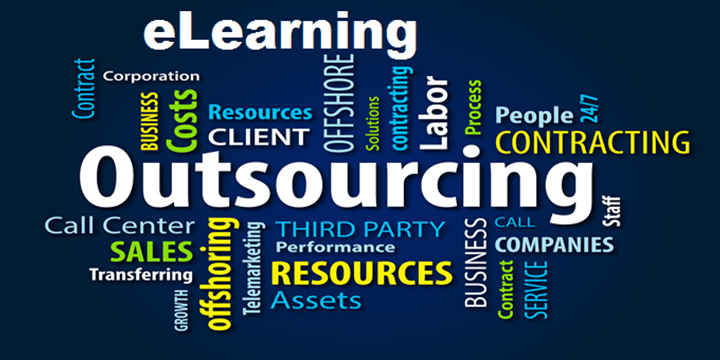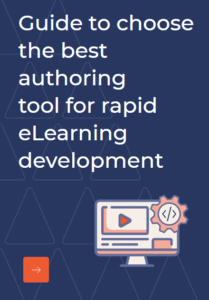“Outsourcing was the bogeyman of the '90s. Protectionists portrayed it as an evil that would take American jobs away. Yes, some jobs did go offshore as people feared, but it made the global economic pie grow bigger.” This is how Vivek Wadhwa, a Distinguished Fellow at Carnegie Mellon University’s College of Engineering and a well-known columnist for The Washington Post described outsourcing. We couldn’t have said better. As eLearning service providers, we have assisted many organizations in meeting their eLearning expectations, by designing and delivering solutions that fit the budget and the requirements.
Over the years, we have come across various clients/customers-the happy types, the disgruntled, the pessimists, the optimists, the know-it-all, and the understanding and kind types too. After working with certain clients for some years, we have built a relationship with them, wherein we easily understand their needs and provide value additions. In doing so, we have also observed some common mistakes, and some best practices to be followed while opting for eLearning outsourcing. Here’s what you should DO and what you SHOULD’NT DO while outsourcing eLearning.
DO Analyse Your Needs
Need analysis is important and no matter how many times this is repeated, it still will remain so. As discussed in a post earlier, eLearning outsourcing, the scale, selection of service provider, etc. depends on the learning requirement of the organization.
DO Look for Options
Don’t just settle for the first eLearning vendor you come across. Outsourcing is usually a long-term business plan and for this you have to find a good partner. So, look around, ask for opinions, learn more about the kind of work done in past, look for awards and recognitions, knowledge sharing, etc. too before finalizing.
DO Establish a Channel for Communication
Once the vendor is selected, ensure that there is a proper communication channel. See to it that both the teams are connected and reply to queries promptly. Also, ensure that all the information is passed down correctly. Try not to hide information as it can impact the final output.
DO Ensure Security of Data
While being open and frank is good, it is also necessary to take precautions when it comes to data security. If your organization handles sensitive data, make sure that you safeguard the information with a Non-disclosure agreement, and secure data sharing channels, etc.
DO Opt for Trial
Most eLearning outsourcing vendors provide a minimal trial period for Learning management systems and usable samples of their work. You can check the features, the interface, the customizability, etc. Do utilize the provision to find the best service provider.
DON’T Allow the Vendor to Assume
Working on assumptions tends to deliver sub-standard outputs. So, share information, provide feedback, give suggestions about the kind of modifications required. Don’t just leave it to the vendor’s imagination.
DON’T Judge it by the Cover
Vendors usually have eye-catching portfolios and a long list of awards. But all that glitters isn’t Gold. So, do thorough research before getting started with eLearning outsourcing.
DON’T Just Pick the First Option
When it comes to choosing an eLearning solution, the first option may not always be the best option. Discuss your requirement with the vendor, brief them about the audience, the context of learning, the learning schedules if any, and then find the right solution. Try not to rush to conclusions.
DON’T Ignore the Stakeholders
Get approval from all the stakeholders right at the beginning to avoid any issues in the course of time. Always have a detailed plan and involve the stakeholders during the course development stage too, to get valuable inputs.
DON’T Expect Changes to Happen Overnight
eLearning Vendors are not magicians and hence, every stage requires a certain time period. While course development in different styles takes different time span, course delivery and the manifestation of results take time too. So, wait for the changes to happen and try not to rush things.
eLearning Outsourcing comes as the best option for organizations in which employees are unable to take ownership for course creation or in situations where a high level of expertise is required. It also comes to the rescue when there is an increased requirement for eLearning. The dos and Don’ts can assist in establishing a good client-vendor relationship and receiving positive outcomes.



